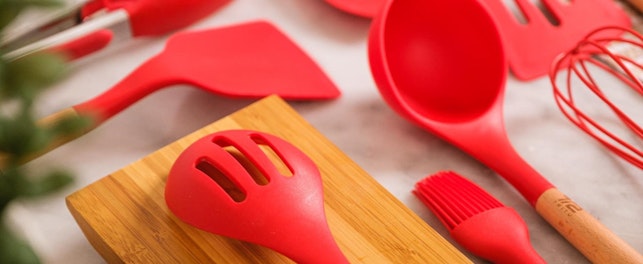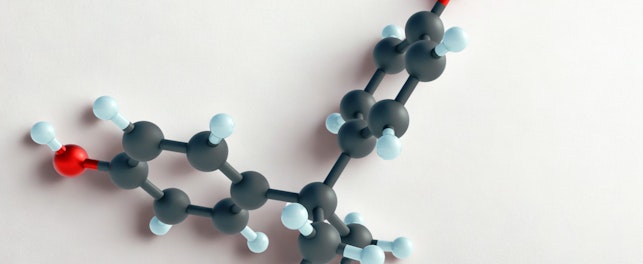Brazil has launched a 60-day public consultation on a proposal to revise the nation’s technical regulation and conformity assessment requirements for metal cookware. Comments are accepted until June 10, 2021.
In April 2021, Brazil’s Ministry of Economy/National Institute of Metrology, Quality and Technology (Ministério da Economia/Instituto Nacional de Metrologia, Qualidade e Tecnologia, Inmetro) issued Public Consultation No. 14 of April 7, 2021 (Consulta Pública No. 14, de 7 de Abril de 2021) on a proposal to amend the nation’s Quality Technical Regulation and Conformity Assessment Requirements for metal cookware (the Proposal).
The Proposal contains, inter alia, several important changes to the requirements for metal cookware falling under Inmetro Ordinances 398/2012 ‘Technical Regulation’ and 419/2012 ‘Conformity Assessment Requirements’. It:
- Clarifies that the scope of metal cookware is only for those intended to be used in ovens and on stoves:
- ≤ 75 cm base or diagonal diameter for cookware to be used in ovens, equivalent to the diameter of the circumcircle in the geometric shape of the cookware, such as roasting pans, trays or other metal cookware with a similar function
- ≤ 17 L volumetric capacity for cookware to be used on stoves, such as water baths, casseroles, steam cookers, pans, pots, woks or other cookware with a similar function
- ≤ 40 cm base or diagonal diameter for cookware to be used on stoves, equivalent to the diameter of the circumcircle in the geometric shape of the cookware, such as grill pans, barbeque grills, crepe pans, frying pans, saucepans and other cookware with a similar function
- ≤ 2 L volumetric capacity for cookware to be used on stoves, such as coffee makers, kettles, fryers or other cookware with a similar function
- ≤ 30 L volumetric capacity for pressure cookers
- Exempts pans with a capacity larger than those listed above and those exclusively for hotels, industry and campgrounds, cookware made of silicone, rechargeable electrical items and those that are disposable
- Requires cookware exclusively for use in hotels, industry or campgrounds to be properly identified on their labels or packaging
- Updates the list of supplementary documents in Inmetro Ordinance 398/2012 (see Table 1 below)
- Replaces ‘ABNT NBR 6589, classes FC100, FC150 and FC200’ with ‘DIN EN 1561, classes GJL-100, GJL-150 or GJL-200’ for cast iron pressure cooker bodies and other cookware bodies
- Amends the testing requirements for physical and mechanical properties
- Clarifies the grouping on types of cookware by family, revises the sampling and acceptance criteria for cookware and pressure cookers, as well as illustrative requirements for the conformity identification seal under Inmetro Ordinance 419/2012
According to the Proposal, comments will be accepted until June 10, 2021.
Highlights of the revised list of supplementary documents under Inmetro Ordinance 398/2012 are summarized in Table 1.
| Public Consultation No. 14 of April 7, 2021 Ministry of Economy/National Institute of Metrology, Quality and Technology Official Journal of the Union, April 12, 2021 | ||
|---|---|---|
| Entry | Legislation (including amendment)/Standard | Title |
| 1 | Anvisa RDC No. 91 of 2001 | Technical Regulation – General criteria for packaging and food equipment in contact with food |
| 2 | Anvisa Resolution No. 105, 1999 | Approves the Technical Regulation on the general provisions for packaging and plastic equipment in contact with food |
| 3 | Anvisa RDC No. 123, 2001 | Approves the Technical Regulation on packaging and elastomeric equipment in contact with food |
| 4 | Anvisa RDC No. 20, 2007 | Approves the technical Regulation on provisions for packaging, coatings, utensils, lids, and metallic equipment in contact with food |
| 5 | Anvisa RDC No. 17, 2008 | Approves the Technical Regulation on a positive list of additives for plastic materials intended for the preparation of packaging and equipment in contact with food |
| 6 | Anvisa Ordinance No. 27, 1996 | Approves the Technical Regulation on glass and ceramic packaging and equipment in contact with food |
| 7 | Anvisa Ordinance No. 987, 1998 | Approves the Technical Regulation for disposable polyethylene terephthalates – PET – multilayer packaging intended for the packaging of carbonated non-alcoholic beverages, contained in the Annex to this Ordinance |
| 8 | ABNT NBR ISO 209:2007 | Aluminum and its alloys – Chemical composition |
| 9 | ABNT NBR ISO 4287:2009 | Geometric product specifications (GPS) – Roughness: Profile method – Roughness terms, definitions and parameters |
| 10 | ISO 2747:1998 | Vitreous and porcelain enamels – Enameled cooking utensils – Determination of resistance to thermal shock |
| 11 | ISO 4532:1991 | Vitreous and porcelain enamels – Determination of the resistance of enameled articles to impact – Pistol test |
| 12 | ISO 6508-1:2016 | Metallic materials – Rockwell hardness test Part 1: Test method (A, B, C, D, E, F, G, H, K, N, T scales) |
| 13 | ISO 28706-2:2017 | Vitreous and porcelain enamels – Determination of resistance to chemical corrosion – Part 2: Determination of resistance to chemical corrosion by boiling acids, boiling neutral liquids and/or their vapors |
| 14 | ASTM A240M:2020 | Standard specification for chromium and chromium-nickel stainless steel plate, sheet, and strip for pressure vessels and for general applications |
| 15 | ABNT NBR 5601:2011 | Stainless steels – Classification by chemical composition |
| 16 | ABNT NBR 8094:1983 | Coated and uncoated metal material – corrosion by exposure to salt spray |
| 17 | ABNT NBR 11823:2016 | Metal household items – Pressure cooker |
| 18 | ABNT NBR 12610:2010 | Surface treatment of aluminum and its alloys – Determination of the thickness of non-conductive layers by the eddy current method (Eddy Current) |
| 19 | ABNT 12611:2006 | Aluminum and its alloys – Surface treatment – Determination of anodic layer thickness – Optical microscopy method |
| 20 | ABNT 14155:2010 | Surface treatment of aluminum and its alloys – Determination of the microhardness of the anodic layer of anodizing for technical purposes (hard) |
| 21 | ABNT NBR 14630:2018 | Metal household items for use in ovens and stoves |
| 22 | ABNT NBR 14622:2006 | Aluminum and its alloys – Surface treatment – Determination of paint adhesion – X – cut and grid cut method |
| 23 | ABNT NBR 14876:2016 | Metallic household appliances – Handles, long handles, knobs and fastening systems |
| 24 | ANBT NBR 15321-1:2019 | Metallic household appliances – Non-stick coating Part 1 – Safety |
| 25 | ABNT NBR 15321-2:2020 | Metallic household appliances – Non-stick coating Part 2: Performance for products used in ovens |
| 26 | ABNT NBR 15975:2011 | Primary aluminum and casting – Chemical composition |
| 27 | ABNT NBR 5906:2008 | Thin hot carbon steel plates for stamping – Specification |
| 28 | ABNT NBR 5915-1:2013 | Cold rolled steel sheets and coils – Part 1: Requirements |
| 29 | ABNT NBR 6589:2015 | Gray cast iron parts classified according to tensile strength |
| 30 | ABNT NBR 6651:2013 | Cold rolled carbon steel sheets and coils for glass enameling – Specification |
| 31 | DIN EN 1561:2012 | Founding – Gray cast irons |
Table 1
SGS technical experts have extensive knowledge and testing experience in materials and articles in contact with food. They work to ensure that your products meet the appropriate regulations for food contact materials, paving the way for compliance. From overall migration tests to expert advice on emerging regulations, compliance issues and documentation review, SGS is the partner to trust. In the end, it’s only trusted because it’s tested. Discover more on our website and read our brochure.
For enquiries, please contact:
Hingwo Tsang
Global Information and Innovation Manager
t: (+852) 2774 7420
© SGS Group Management SA - 2021 - All rights reserved - SGS is a registered trademark of SGS Group Management SA. This is a publication of SGS, except for 3rd parties’ contents submitted or licensed for use by SGS. SGS neither endorses nor disapproves said 3rd parties contents. This publication is intended to provide technical information and shall not be considered an exhaustive treatment of any subject treated. It is strictly educational and does not replace any legal requirements or applicable regulations. It is not intended to constitute consulting or professional advice. The information contained herein is provided “as is” and SGS does not warrant that it will be error-free or will meet any particular criteria of performance or quality. Do not quote or refer any information herein without SGS’s prior written consent.



